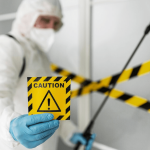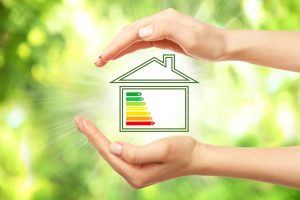
- Power cuts create immediate disruption to comfort, food storage, and communication.
- Hidden costs like spoiled groceries, damaged electronics, and lost income add up quickly.
- Businesses face greater risks with stock loss, downtime, and equipment damage.
- Preparing with backup systems and protective measures helps reduce long-term costs.
The first thing that comes to your mind when the lights abruptly go off is how soon everything will be normal again. You may pick up a torch, look at your phone battery, or wait calmly, thinking that everything will soon be finished. What can easily pass unnoticed is the extent to which one outage can spill over into everyday life. Blackout is not just being in the dark a bit. It creates a domino effect of inconveniences and expenses that the majority of the population does not think about until they have to face them directly.
The Short-term Effect of a Blackout
The initial few minutes of power outage can even seem bearable, but that does not last long. Comfortable rooms soon begin to lose heating or cooling. Refrigs and freezers malfunction, and that is why perishable food is immediately in danger. When the outage occurs during the night, visibility is significantly reduced, and even the simplest activities such as walking around the house can be clumsy or dangerous.
To most people, the loss of power also implies immediate interruption of communication. Internet connections fail, mobile phones begin to run out of battery and it becomes hard to keep in touch. Although a brief power outage may not be a big issue, such early mornings can cause unforeseen stress, particularly to families with young children or to anyone who has medical equipment at home.
Hidden Costs
Direct costs of a power cut seldom end with flickering lights. Even food spoilage can become costly in hours or days when the outage is prolonged and households have to dispose of hundreds of dollars worth of food. This pressure is more acutely felt by businesses, although even at home, the garbage is considerable.
Then there are the ignored costs. Electronic equipment can be destroyed by a sudden blackout in case the blackout is preceded by a surge, leading to the repair or replacement cost. Work-from-home plans usually come to a halt when the computers and routers crash, causing loss of income or missed deadlines. Even such a basic thing as the necessity to move somewhere, either to the house of a friend or to a hotel, contributes to the financial burden.
What appears to be a short-term inconvenience can easily escalate into several costs that are much more than most people can even imagine when the power goes off.
Why Businesses are Straining at a Faster Pace
An outage can be annoying to a household, yet to a business, the consequences are instant and can be expensive in many cases. Stores lose business when point-of-sale systems fail. Cafes and restaurants risk losing whole stockrooms of food. When computers and internet connections are down, offices come to a halt. Even a short disruption in the operations can lead to a visible decrease in the revenues, especially in the case of smaller companies that are based on daily business.
The loss may not be limited to lost sales. Specialised machinery, equipment like servers, refrigeration units, or equipment can be damaged by sudden shutdowns or power surges that occur after the outage. Some of these problems may be insurable, but claims can be long and do not often fully reimburse the disruption. Most businesses, without a backup generator or contingency plan, are losing far beyond the hours the power was off.
When Rapid Response Becomes Necessary
Not all outages involve waiting until the local grid is online again. In other cases, the problem is in the property itself, and the time spent to solve it may jeopardize safety. In urgent situations, many households rely on emergency call-outs for loss of power, especially when an outage drags on and there’s no clear sign of resolution.
These reactions are not merely regarding the re-establishment of light and appliances. Electricians are able to detect faults, fix broken wiring, and recognize possible hazards before they become serious. In the case of families with medical equipment at home or businesses with critical refrigeration, timely professional response can help avoid minor interruptions and convert them into an emergency. Early action can save a lot of stress and money when compared to waiting in indecision.
Preparing to be Interrupted
A single significant outage is usually sufficient to alter the way individuals consider electricity. Preparation does not remove the disruption, but makes the recovery easier. Households with several battery-powered lights, portable chargers and non-perishable food are better placed to survive the initial hours of a blackout. Surge protection can also be installed to protect costly appliances in case the power goes off and on again.
At a bigger level, there are businesses and households that invest in backup generators. Although not all properties require one, they ensure security in places where outages are common. It is also important to learn how your energy supplier informs you about scheduled or unplanned disruptions. Knowing their normal response time will enable you to prepare in advance instead of rushing at the last moment.
By doing this, it will not eliminate the inconvenience of the loss of electricity but will help mitigate the unwanted expenses that are likely to accompany it.
Conclusion
The financial and practical consequences of an abrupt power outage are easy to underrate. What starts as a nuisance can result in spoiled food, lost time at work, and costly machinery maintenance. In the case of businesses, the impact is felt even more quickly, as lost income and damaged inventory accumulate in a few hours.
Although nobody can tell when the next blackout will occur, you can prepare. Backup options, equipment protection and responding promptly to issues are all part of cushioning the blow. A bit of planning today would make the next interruption less stressful and much less expensive than otherwise.








